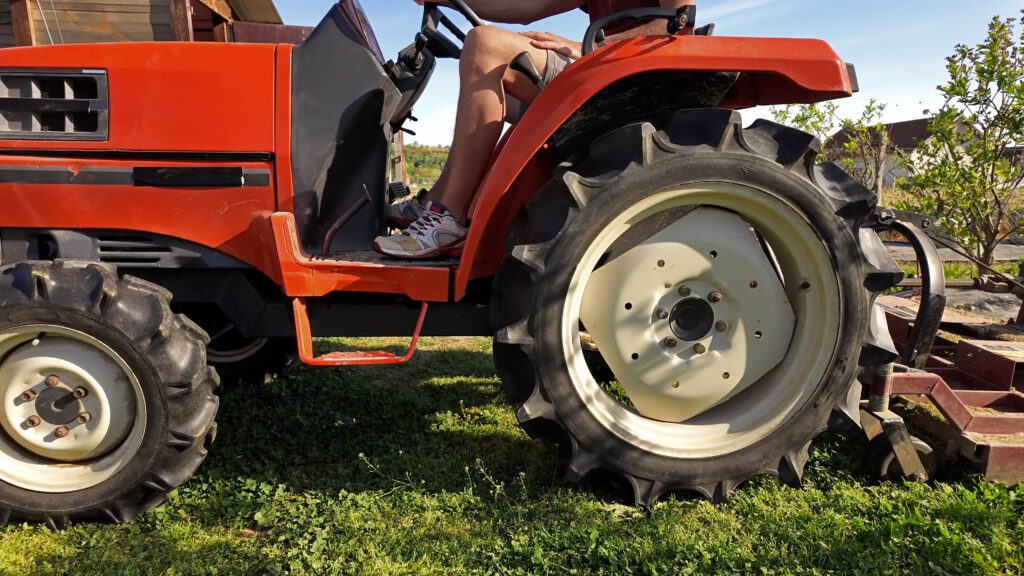What Exactly is Bush Hogging?

Wondering What Bush Hogging is?
A Down-to-Earth Guide to Clearing Land Like a Pro
If you’ve spent any time around farmland, country roads, or overgrown property lines, you’ve probably heard the term “bush hogging” tossed around like everyone’s supposed to know what it means.
And while it may sound like something you do in a mud pit with a four-wheeler and a lot of attitude, bush hogging is actually a practical and powerful land management tool—especially here in places like Mobile, Baldwin County, and rural Alabama where wild growth takes hold fast.
So let’s break it down. What is bush hogging, when do you need it, and why does it matter for anyone managing land?
🌿 What Is Bush Hogging?
Bush hogging—also called rotary cutting, brush hogging, or field mowing—is the process of clearing overgrown vegetation, tall grass, thick weeds, and light brush using a heavy-duty mower attachment. The tool used is called a bush hog, and it attaches to the back of a tractor via the three-point hitch system.
Unlike a traditional lawn mower, a bush hog isn’t built for manicured turf. It’s designed to tackle the tough stuff—we’re talking:
-
Waist-high weeds
-
Thorny vines
-
Saplings and small trees (1–2 inches thick)
-
Overgrown pasture
-
Abandoned property
-
Perimeter fence lines
A bush hog uses thick, dull blades (yes, dull on purpose) that whack through vegetation by force, not finesse. This makes it incredibly effective on rugged terrain, uneven ground, and wild growth.
🛠 How Does a Bush Hog Work?
The bush hog itself is a large rotary mower mounted on a deck. The blades spin horizontally, using the tractor's PTO (power take-off) shaft for energy. As the blades rotate at high speeds, they shred whatever they hit—grass, stems, thistles, even baby trees.
The cutting height is adjustable, and the mower deck is built to bounce over rocks, stumps, and holes without damage, making it ideal for unmaintained land.
In short: it’s the land-clearing equivalent of a sledgehammer.
🚜 Common Uses for Bush Hogging
Bush hogging is an essential service for landowners, farmers, and even real estate professionals looking to improve the appearance, usability, or safety of rural property. Some common use cases include:
1. Pasture Management
Keeping fields cleared improves livestock access and reduces ticks and snakes. It also promotes healthier forage regrowth by removing aggressive weeds.
2. Land Prep for Building or Planting
Bush hogging is a fast way to clear land before tilling, fencing, or construction. Whether you're putting in a garden, fencing off an area, or planning a homesite—it’s step one.
3. Wildfire Prevention
Tall, dry vegetation is a fire hazard. Bush hogging can be a part of a fire mitigation plan on larger properties or in drought-prone areas.
4. Fence Line and Property Border Maintenance
Thick brush and vines can destroy fences over time. Bush hogging along fence lines makes inspections and repairs easier and protects your investment.
5. Reclaiming Abandoned or Inherited Property
Inherited family land that hasn’t been touched in a decade? Overgrown lots you’re trying to sell? Bush hogging makes them presentable again.
6. Aesthetic Clean-Up
Let’s face it—overgrown land looks neglected. If you're trying to sell a rural home or land parcel, bush hogging can instantly boost curb appeal and marketability.
🏆 Benefits of Bush Hogging
| Benefit | Description |
|---|---|
| Time-saving | Clears in hours what might take days with manual tools |
| Cost-effective | Cheaper than full excavation or heavy land clearing |
| Protects Property Value | Makes land usable, accessible, and sellable |
| Reduces Pests | Eliminates dense cover for snakes, rodents, and ticks |
| Encourages Healthy Growth | Cuts down invasive plants and allows desired vegetation to thrive |
| Prevents Soil Erosion | Maintains ground cover while removing unwanted top growth |
⚠️ Things Bush Hogging Won’t Do
Let’s be clear—bush hogging isn’t bulldozing. It won’t:
-
Remove stumps or large tree roots
-
Level ground or grade soil
-
Clear massive trees
-
Dig out brush by the roots
It’s a top-down clearance method, not full excavation. If you need full-scale site prep or grading, that’s a different service (and we can help with that, too).
📍 Bush Hogging in Mobile, AL: Why It Matters Here
If you’re in Mobile, Semmes, Wilmer, Theodore, Grand Bay, or anywhere in South Alabama, you already know:
-
Kudzu, privet, and vines grow fast
-
Our humidity creates lush growth in weeks
-
A vacant lot can look like Jurassic Park in a season
Bush hogging is a vital maintenance tool for this region. It’s also highly affordable and efficient when done right.
Whether you’re a rural landowner, a property investor, or a real estate agent prepping a listing, bush hogging might be the fastest way to turn “overgrown mess” into “market-ready”.
🤔 Should You DIY or Hire It Out?
If you already own:
-
A rotary cutter
-
Land that isn’t too treacherous
…then yes, you could tackle some light bush hogging yourself.
But if you don’t have the equipment—or the time, know-how, or desire to wrestle a tractor—hire a pro.
Professionals:
-
Bring the right-sized cutter for the job
-
Know how to avoid buried hazards
-
Work faster and more efficiently
-
Leave your land looking sharp, not shredded
📞 Need Bush Hogging in Mobile, AL?
At The Landscape Experts, we offer bush hogging and land-clearing services for farms, lots, pastures, and rural residential properties throughout the Mobile area.
We’re fully equipped and licensed to handle:
-
Overgrown acreage
-
Residential fence lines
-
Commercial lots
-
Real estate listings
-
And more
We do the dirty work so you can enjoy the clean slate.